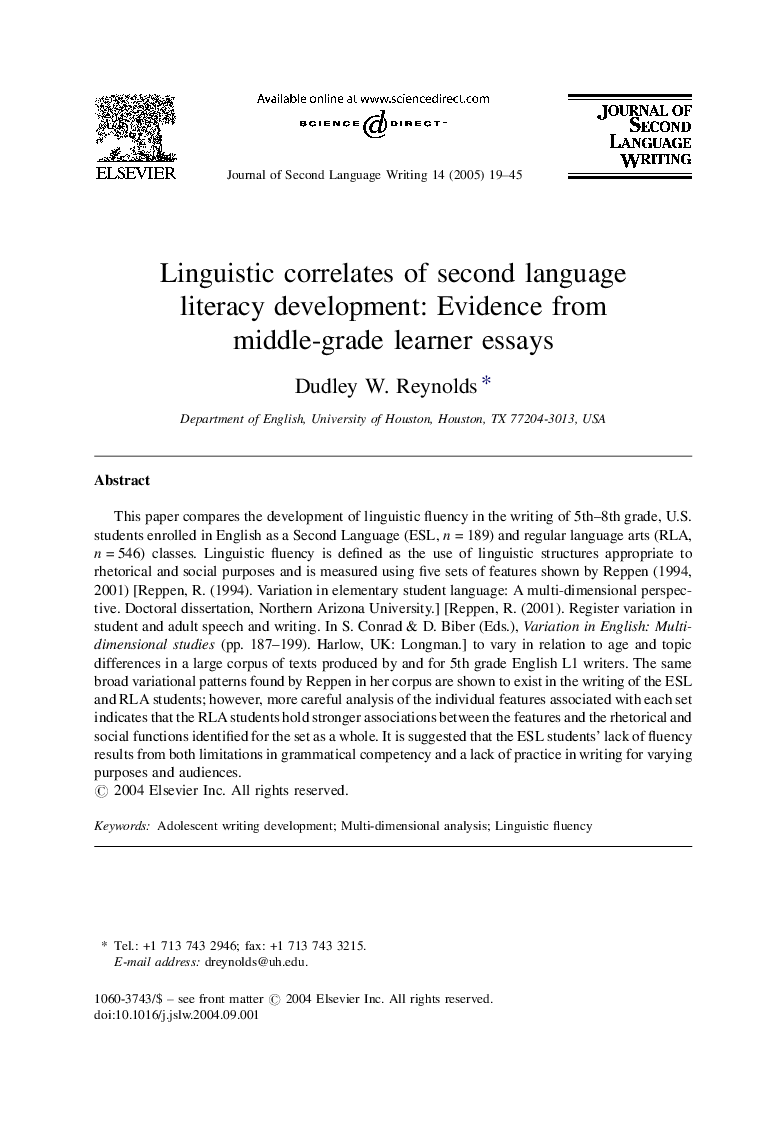| Article ID | Journal | Published Year | Pages | File Type |
|---|---|---|---|---|
| 10315427 | Journal of Second Language Writing | 2005 | 27 Pages |
Abstract
This paper compares the development of linguistic fluency in the writing of 5th-8th grade, U.S. students enrolled in English as a Second Language (ESL, n = 189) and regular language arts (RLA, n = 546) classes. Linguistic fluency is defined as the use of linguistic structures appropriate to rhetorical and social purposes and is measured using five sets of features shown by Reppen (1994, 2001) [Reppen, R. (1994). Variation in elementary student language: A multi-dimensional perspective. Doctoral dissertation, Northern Arizona University.] [Reppen, R. (2001). Register variation in student and adult speech and writing. In S. Conrad & D. Biber (Eds.), Variation in English: Multi-dimensional studies (pp. 187-199). Harlow, UK: Longman.] to vary in relation to age and topic differences in a large corpus of texts produced by and for 5th grade English L1 writers. The same broad variational patterns found by Reppen in her corpus are shown to exist in the writing of the ESL and RLA students; however, more careful analysis of the individual features associated with each set indicates that the RLA students hold stronger associations between the features and the rhetorical and social functions identified for the set as a whole. It is suggested that the ESL students' lack of fluency results from both limitations in grammatical competency and a lack of practice in writing for varying purposes and audiences.
Keywords
Related Topics
Social Sciences and Humanities
Arts and Humanities
Language and Linguistics
Authors
Dudley W. Reynolds,
